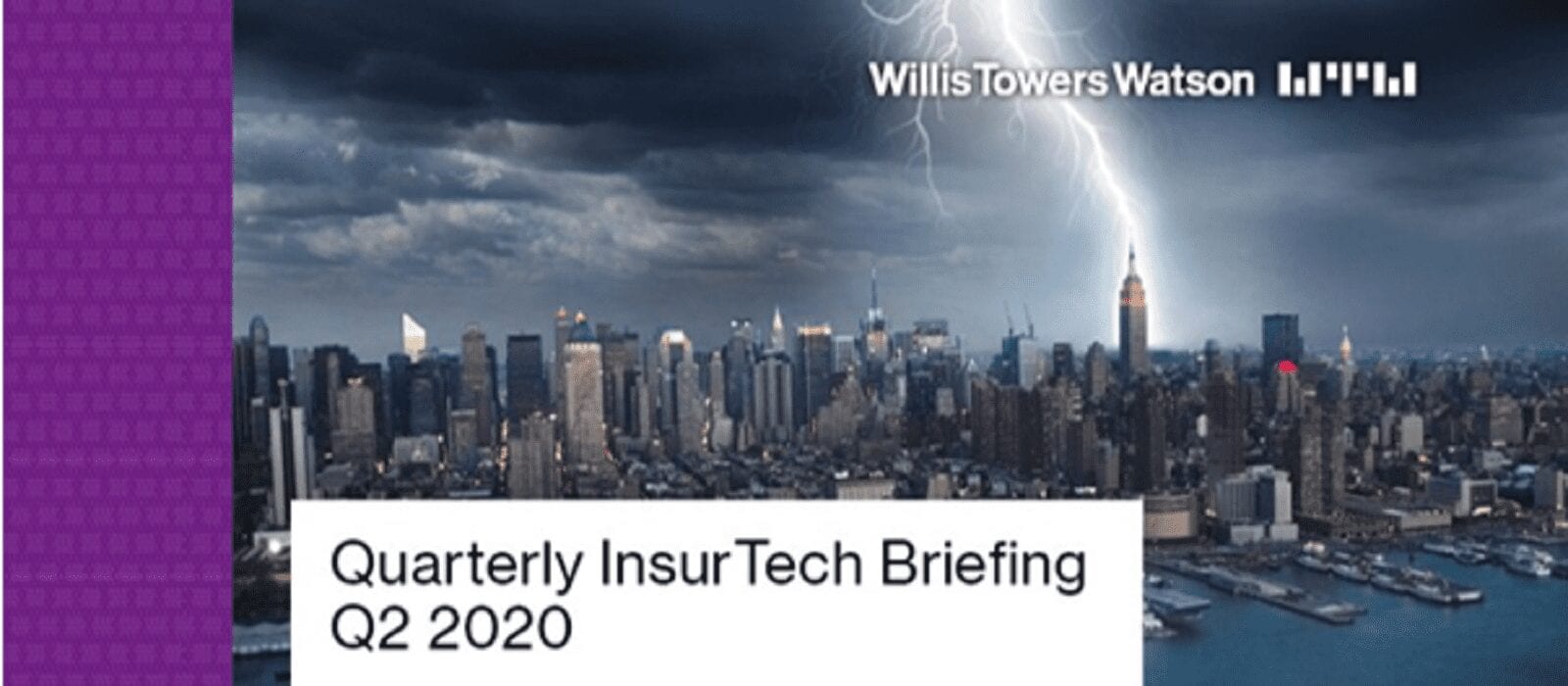Following the COVID-19-induced slowdown in global InsurTech investment during the first months of 2020, USD 1.56 billion was raised by InsurTech firms in Q2. The total, up 71% over Q1, was driven in part by later-stage investments, including four ‘mega-rounds’ in excess of USD 100 million, according to the new Quarterly InsurTech Briefing from Willis Towers Watson.
At 74, deal count was down 23% from Q1, but many individual rounds were larger as investors continued to turn away from Seed and Angel deals in favour of support for more mature ventures. P&C sector investments predominated, accounting for 68% of funding, but the share of L&H sector investments was up 17 points to 32%, as the pandemic crisis continues to compound the value of technology, and particularly telehealth, in the segment. Also notable was the initial public offering of Lemonade and the acquisition of two incumbent insurance companies by InsurTechs Hippo and Buckle.
Deals were struck in a record-breaking 25 countries, including newcomers such as Taiwan, Croatia, and Hungary. Seed and Series A financing hit a record low, at just 42% of deals. Series A deals were flat, but Series C deals accounted for 11% of deals, up from 6% the previous quarter. Distribution-focused start-ups saw an 11-point rise in deal share, while B2B companies reduced their share by nine points. New (re)insurer partnerships reached a record high of 34 deals, up four from Q1 2020.
Dr Andrew Johnston, Global Head of InsurTech at ICMIF Supporting Member Willis Re, said: “While InsurTech investment clearly rebounded in Q2, and the trend towards greater commitments to later-stage fundraisings continues, we should be cautious and not read too much into the general state of the global InsurTech market based on this quarter alone. In the short term, investment confidence will test the status quo, especially for highly leveraged InsurTechs. Similarly, certain risks and their associated vectors have changed fundamentally and so the impact of that is yet to be truly felt. It is quite possible that we will observe a general slowing down of InsurTech activity as a result.
In the medium term, changing risk classes may be better understood alongside rising consumer optimism, but the true economic impact of COVID-19 probably won’t unfold until 2021 and 2022. This will undoubtedly impact many (re)insurers’ appetite to invest in or deploy technology. Survival may be a challenge for some InsurTechs, especially if their use-case has been lost forever due to underlying societal change following the lockdown. Equally, such changes will create opportunities for others. If the funding gap between Seed and later stages continues to widen then many InsurTechs will struggle to acquire the funds required for maturing growth”.
The latest Briefing, which focuses on InsurTech for property risks, opens with a detailed exploration of the segment. The Briefing includes case studies of the property-focused InsurTechs Openly, a managing general agent writing homeowners and landlord products; handdii, a digital platform for property insurance claims; Arturo, which delivers structured data observations and predictions for property insurers; Hometree, which provides home cover contracts to insureds; and Insurdata, which offers high-resolution exposure data in real time.
The issue also explores Structure Insurance Score, developed by Willis Towers Watson and e2Value to capture data used in determining replacement costs; the USD 123 million fundraising by the title insurance and escrow service States Title, which took its valuation to USD 623 million; and the acquisition by homeowners insurer Hippo of Spinnaker Insurance Company, which gives the unicorn InsurTech insurance licences in 50 US states.
The Briefing includes discussions with Kyle Beatty, an InsurTech investor and principal at American Family Ventures; and also a discussion with the founders of TypTap, a B2C InsurTech focused on homeowners and particularly flood risk. The issue also carries an article by Desmond Carroll, Executive Vice President and Head of Catastrophe R&D, Willis Re North America, on technology for property catastrophe insurance.
Carroll said: “The chief technologies for catastrophe risk modelling have evolved little in terms of process since the inception of the science, despite much-expanded use of model outputs. That is set to change. The combination of machine learning and big data holds real potential to disrupt traditional cat modelling methodologies, for example through the mass analysis of satellite data to better understand catastrophic weather events. That’s just one way that InsurTech will ultimately revolutionise the property branch of the risk transfer business.”
View the full report here.






